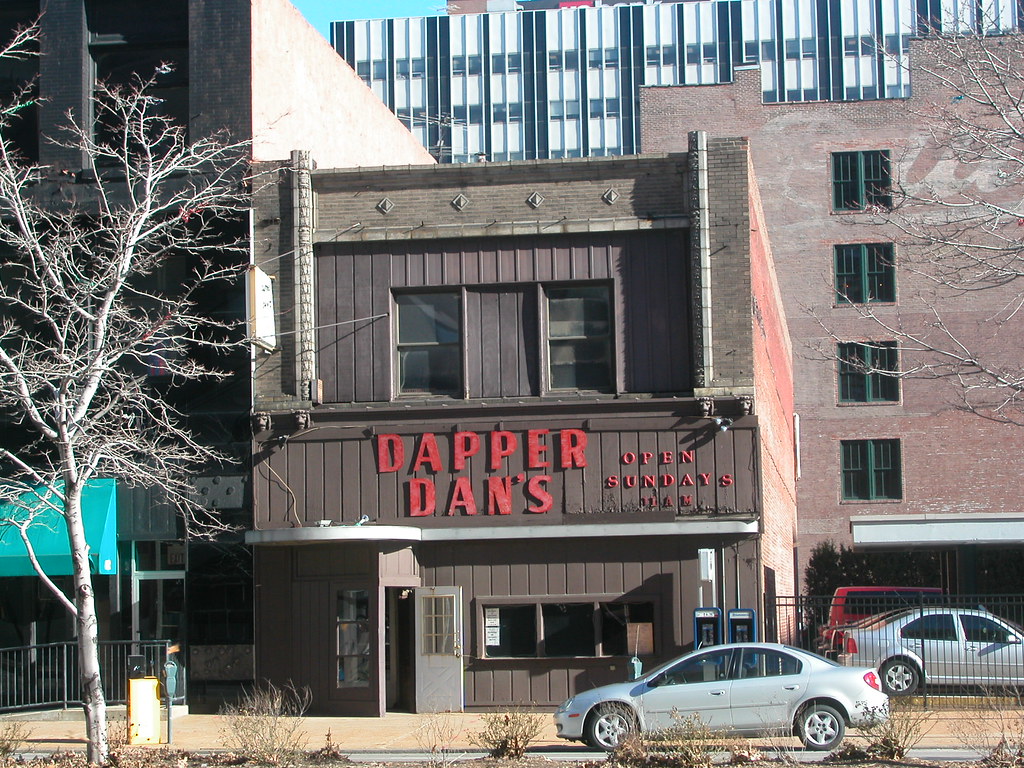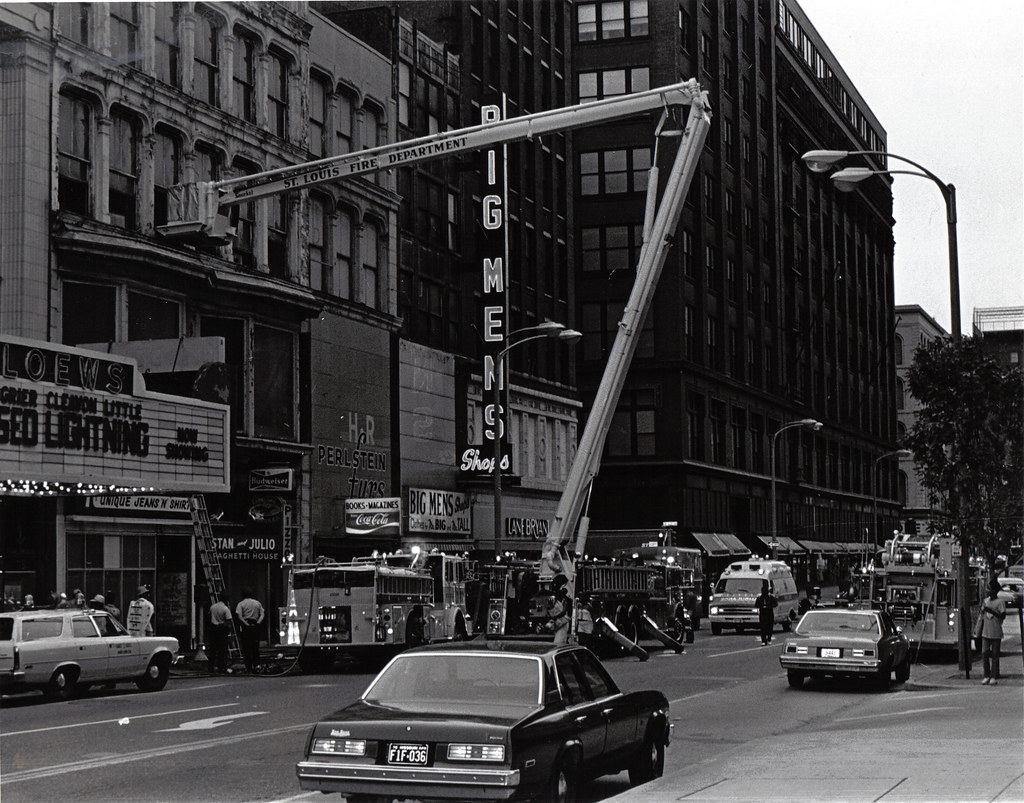by Michael R. Allen
 As Skip to the ‘Lou reported, Dapper Dan’s closed on Saturday. Located at 410 North Tucker Boulevard, Dapper Dan’s was a downtown institution built on another’s legacy. Dapper Dan’s opened in 1976 in the space that reigned as the legendary Bismarck Cafe from 1923 through 1972. The Bismarck was known for turtle soup and cloaked booths where politicians, businessmen, reporters and mobsters would huddle over a meal or drinks. Dapper Dan’s, as Bill McClellan described well in his column last week, was of a different era for downtown. Born at a time when fortunes were declining, it was a haven for the working class to whom the city center was left as the elite retreated westward.
As Skip to the ‘Lou reported, Dapper Dan’s closed on Saturday. Located at 410 North Tucker Boulevard, Dapper Dan’s was a downtown institution built on another’s legacy. Dapper Dan’s opened in 1976 in the space that reigned as the legendary Bismarck Cafe from 1923 through 1972. The Bismarck was known for turtle soup and cloaked booths where politicians, businessmen, reporters and mobsters would huddle over a meal or drinks. Dapper Dan’s, as Bill McClellan described well in his column last week, was of a different era for downtown. Born at a time when fortunes were declining, it was a haven for the working class to whom the city center was left as the elite retreated westward.
I first encountered Dapper Dan’s a few years ago, with the erstwhile Mickey McTague as my guide. McTague was then still working for the Sheriff’s Department, whose ranks gave the bar more than a little business over the years. Mickey introduced me to Rich Dallas and his daughters, and a cast of regulars that included Jefferson Arms residents, a parking lot attendant and a many retired folks. In subsequent trips, I saw these people and others, ranging from city workers to packs of youth waiting for their favorite bands to perform at the Creepy Crawl next door. Once, my colleagues and I took a prospective co-worker to Dapper Dan’s to give him an off-the-record account of what he might be getting himself into by taking a job in historic preservation. Either the drinks dulled his senses or he had a strong will; he came to work for Landmarks and remains here today.
However, never did I encounter a full Dapper Dan’s. I have been at a full Maurizio’s, and a crowded Missouri Bar and Grill. Dapper Dan’s did not pull in as many people. I think this is because the people it pulled have spread out. Just as the businessmen and politicians moved their meetings closer to their homes and even jobs in the Central West End and St. Louis Hills, the working class spread outward. Remember, the steepest population loss in St. Louis history was recorded between the 1970 census and the 1980 census. That Rich Dallas could open a downtown business in that period and keep it alive for another 32 years is testament to his canny and his loyal customer base.
Downtown will move on without Dapper Dan’s, just as it has lost many other of its hard-boiled establishments like Carl’s Two Cents Plain, Jimmy’s, Amitin’s and a plethora of others. I regret being too ill over the weekend to pay my final respects, because there will be nothing else like Dapper Dan’s with its weary, time-worn urbanity.
What becomes of the building that housed Dapper Dan’s is an open question. The building, built in 1890, was once five stories tall. In the days of downtown despair, the owner of this building and its next door neighbor joined a short-lived fad of lopping “unnecessary” floors. This crude pragmatism saved the historic restaurant fixtures on the first floor, which remain pristine down to the men’s room details, but gave the building an awkward, jagged crown. Still, what remains is a great turn-key opportunity for a bar and restaurant. The old truncated Creep Crawl building next door has found new life as a pet clinic, indicating that there is a market for an amputee building.


